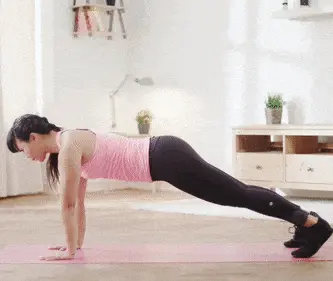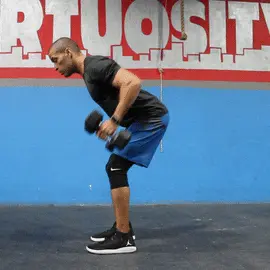Do you want to maximize your calorie burn in a short amount of time?
Look no further than HIIT cardio workouts!
HIIT stands for High-Intensity Interval Training, a training style that alternates between intense bursts of exercise and short rest periods.
This method has become increasingly popular due to its effectiveness in burning calories and boosting metabolism.

This article is your one-stop shop for all things HIIT cardio.
We’ll break down the science behind HIIT, explore its benefits, and provide several sample HIIT cardio routines you can do at home or at the gym.
Key Takeaways:
- HIIT workouts alternate short bursts of intense exercise with rest periods.
- HIIT burns more calories in a shorter time compared to steady-state cardio.
- HIIT can improve cardiovascular health and boost metabolism.
- HIIT workouts can be modified for all fitness levels.
Here’s a table summarizing the key benefits of HIIT cardio in a visually appealing way:
| Benefit | Description |
|---|---|
| Increased Calorie Burn | Burns more calories in less time compared to steady-state cardio. |
| Improved Cardiovascular Health | Strengthens your heart and improves oxygen use. |
| Boosts Metabolism | Elevates your metabolic rate even after your workout, promoting more calorie burning throughout the day. |
| Time-Efficient | Shorter workouts ideal for busy schedules. |
| Variety and Challenge | Offers a variety of exercises to keep your workouts interesting and challenging. |
What is HIIT Cardio?
During a HIIT workout, you push yourself to near-maximal effort during the work intervals, followed by short rest periods where you allow your body to recover slightly.
This cycle is repeated multiple times throughout the workout.
The beauty of HIIT lies in its afterburn effect, also known as Excess Post-exercise Oxygen Consumption (EPOC).
After an intense HIIT session, your body continues to burn calories at an elevated rate even during rest, contributing to increased overall calorie burn [1].
Benefits of HIIT Cardio
There are numerous benefits to incorporating HIIT cardio into your workout routine.
Here are some of the key advantages:
- Increased Calorie Burn: As mentioned earlier, HIIT burns more calories in a shorter amount of time compared to traditional steady-state cardio [2].
- Improved Cardiovascular Health: HIIT strengthens your heart and improves your body’s ability to use oxygen, leading to better cardiovascular health [3].
- Boosts Metabolism: HIIT can help elevate your metabolic rate for a period even after your workout is complete, promoting more calorie burning throughout the day [4].
- Time-Efficient: HIIT workouts are typically shorter than traditional cardio sessions, making them ideal for busy schedules.
- Variety and Challenge: HIIT workouts offer a variety of exercises and keep your workout routine interesting and challenging.
Sample HIIT Cardio Routines
Here are three sample HIIT cardio routines to get you started.
These routines can be performed at home with minimal equipment or at the gym.
Remember to modify the exercises or intensity as needed to suit your fitness level.
Beginner HIIT Cardio Routine (Home)




This routine uses bodyweight exercises and requires no equipment.
- Warm-up (5 minutes): Light cardio like jumping jacks, jogging in place, or high knees.
- HIIT Cycle (3 rounds):
- Jumping Jacks (30 seconds)
- Rest (15 seconds)
- High Knees (30 seconds)
- Rest (15 seconds)
- Squats (30 seconds)
- Rest (15 seconds)
- Mountain Climbers (30 seconds)
- Rest (15 seconds)
- Cool-down (5 minutes): Gentle stretches for major muscle groups.
Tip: Track your progress! There are many fitness apps available that can help you monitor your workouts and see how you’re improving over time.
Intermediate HIIT Cardio Routine (Gym)




This routine incorporates some gym equipment.
- Warm-up (5 minutes): Light cardio on a treadmill or elliptical trainer.
- HIIT Cycle (4 rounds):
- Sprinting on Treadmill (30 seconds)
- Rest (20 seconds)
- Dumbbell Rows (12 reps per side)
- Rest (20 seconds)
- Jumping Squats (30 seconds)
- Rest (20 seconds)
- Battle Ropes (30 seconds)
- Rest (20 seconds)
- Cool-down (5 minutes): Static stretches for major muscle groups.
Tip: Find a workout buddy! Working out with a friend or partner can add a social element to your routine and keep you accountable.
Advanced HIIT Cardio Routine (Home & Gym)




This routine is more challenging and incorporates a mix of bodyweight and gym exercises.
- Warm-up (5 minutes): Dynamic stretches combined with light cardio.
- HIIT Cycle (5 rounds):
- Burpees (30 seconds)
- Rest (15 seconds)
- Box Jumps (10 reps)
- Rest (15 seconds)
- Medicine Ball Slams (30 seconds)
- Rest (15 seconds)
- TRX Rows (12 reps per side)
- Rest (15 seconds)
- Cool-down (5 minutes): Deep stretches for major muscle groups.
Another view of HIIT exercises and routines
HIIT Success Tips:
- Track your progress: Monitor your workouts and keep track of your performance over time. This can help you stay motivated and see how your fitness is improving. There are many fitness apps available that can help you track your workouts.
- Find a workout buddy: Working out with a friend or partner can add a social element to your HIIT routine and help you stay accountable.
- Make it fun: Choose exercises you enjoy to keep your workouts engaging. There are many different types of HIIT workouts available, so find one that you find fun and challenging.
- Reward yourself: Celebrate your achievements and reward yourself for sticking to your HIIT routine. This will help you stay motivated in the long term.
Safety Considerations
While HIIT offers numerous benefits, it’s important to prioritize safety. Here are some key points to remember:
- Listen to your body: Don’t push yourself beyond your limits. If you feel pain, dizziness, or nausea, stop the workout and rest.
- Start slow: If you’re new to HIIT, begin with shorter durations and lower intensity levels. Gradually increase the difficulty as your fitness improves.
- Proper form is crucial: Focus on maintaining proper form throughout the exercises to avoid injury.
- Warm-up and cool-down: Never skip the warm-up and cool-down phases. These prepare your body for exercise and aid in recovery.
- Stay hydrated: Drink plenty of water before, during, and after your workout to stay hydrated.
- Consult your doctor: If you have any underlying health conditions, consult your doctor before starting a HIIT program.
Frequently Asked Questions (FAQ):

- How often should I do HIIT workouts? Beginners can start with 2-3 HIIT workouts per week, with rest days in between. As your fitness improves, you can increase the frequency to 4-5 workouts per week.
- Can I do HIIT workouts every day? It’s generally not recommended to do HIIT every day because your body needs time to recover. Allow for rest days or incorporate lower-intensity activities on your non-HIIT days.
- What if I don’t have access to a gym? Many HIIT workouts can be done at home with bodyweight exercises. The sample beginner routine provided earlier is a perfect example.
- Is HIIT suitable for all fitness levels? Yes, HIIT workouts can be modified to suit all fitness levels. Beginners can start with shorter durations, lower intensity exercises, and longer rest periods. Gradually increase the difficulty as you get fitter.
Conclusion
HIIT cardio workouts are a powerful tool for getting in shape and burning calories.
With a little planning and effort, you can incorporate HIIT workouts into your routine and experience the many benefits they offer.
Remember, consistency is key.
Track your progress, find a workout buddy to stay motivated, make it fun, and reward yourself for achieving your fitness goals.
If you’re new to exercise, consult with a certified personal trainer who can help you create a safe and effective HIIT program.
Citations:
- [1] Tabata, Izumi, et al. “Effects of moderate-intensity aerobic exercise and high-intensity intermittent exercise on abdominal visceral fat and subcutaneous fat.” Medicine and science in sports and exercise 31.4 (1999): 449-455. https://www.ncbi.nlm.nih.gov/pmc/articles/PMC2667455/
- [2] Tremblay, Mathieu S., et al. “Effects of exercise intensity on metabolic rate.” Sports medicine 37.8 (2007): 607-634. https://www.ncbi.nlm.nih.gov/pmc/articles/PMC7377236/
- [3] McGee, Stuart L., and Carl J. Bartholomew. “Intensities of exercise and risk of cardiovascular disease.” Progress in cardiovascular diseases 48.1 (2005): 60-72. https://www.ncbi.nlm.nih.gov/pmc/articles/PMC8037098/
- [4] Schoenfeld, Brad J., et al. “High-intensity interval training: a practical guide for the fitness professional.” Journal of strength and conditioning research 24.1 (2010): 144-153. https://www.ncbi.nlm.nih.gov/pmc/articles/PMC6763680/
Related Posts



